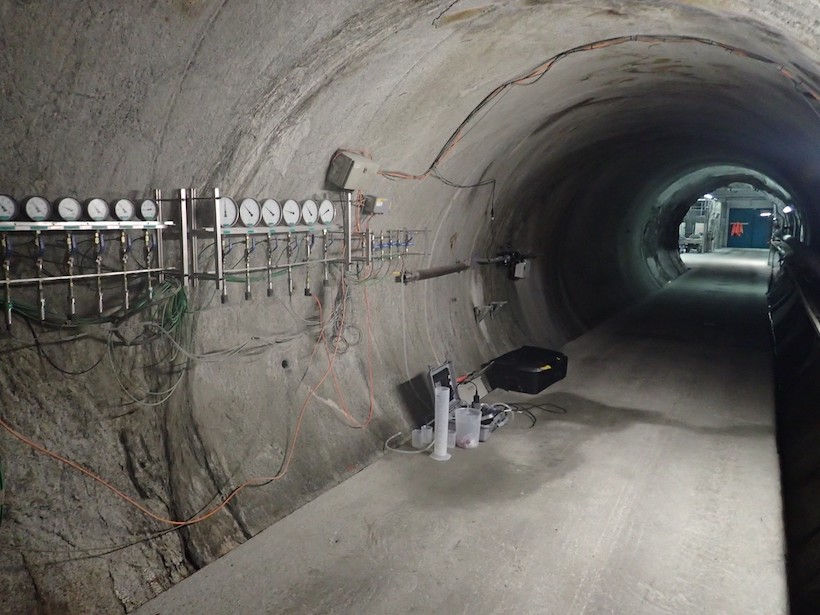Source: Geophysical Research Letters
The aboveground effects of earthquake ground shaking are often readily visible. If the shaking is strong enough, it can rend, tilt, and dislodge rock at Earth’s surface, resulting in cracks, mudflows, and landslides that are apparent for all to see.
Below the surface, earthquakes open fractures that can release and shift gases and fluids, discharging groundwater from aquifers and altering streamflow on the surface. Additionally, quakes can, at least temporarily, expose groundwater to pollution and change its makeup. Such shifts typically correlate with earthquakes larger than magnitude 3.5. But what about weaker earthquakes?
Stillings et al. wondered how tiny earthquakes of magnitude 1 or less, which naturally occur more frequently than larger quakes and which can be driven by human activities, might affect groundwater. With expanding use of hydraulic fracturing, geothermal energy development, and underground carbon storage, humans are inducing more and more such quakes each year, and their effects on groundwater, particularly in water-stressed regions, merit consideration, the authors say.
The researchers performed their research at the Grimsel Test Site in Switzerland, which comprises a series of tunnels and boreholes drilled into granite near Lake Räterichsboden. While the team was observing the site, draining and refilling of the reservoir triggered microearthquakes. Pulses of groundwater propagated from the quake locations, through the local fracture network, and toward the tunnels.
Observations in tunnel boreholes showed that the earthquakes did not change groundwater pressure or solute chemistry. However, they did reveal that the small quakes made the groundwater temporarily more acidic, with a pH change equivalent to the difference between tap water and vinegar. Measurements suggested that the pH returned to its normal level within 24 hours, once the pulse of acidic water had passed. The results represent the first field evidence of earthquake-triggered groundwater acidification, the authors note.
The researchers further investigated the phenomenon in laboratory experiments by grinding and breaking rocks in water with chemistry similar to that at Grimsel. These experiments, in which the water’s pH dropped for several days, revealed that the increased acidity stems from silanols and silica radicals created on fresh mineral surfaces during the grinding process that concentrate hydrogen ions in the water.
Groundwater pH influences many geochemical reactions beneath the surface. The new findings, according to the authors, significantly contribute to understanding groundwater chemistry and water-rock interactions. (Geophysical Research Letters, https://doi.org/10.1029/2020GL089885, 2021)
—Aaron Sidder, Science Writer
Citation:
Sidder, A. (2021), Earthquakes can acidify groundwater, Eos, 102, https://doi.org/10.1029/2021EO154485. Published on 10 February 2021.
Text © 2021. AGU. CC BY-NC-ND 3.0
Except where otherwise noted, images are subject to copyright. Any reuse without express permission from the copyright owner is prohibited.
Text © 2021. AGU. CC BY-NC-ND 3.0
Except where otherwise noted, images are subject to copyright. Any reuse without express permission from the copyright owner is prohibited.

